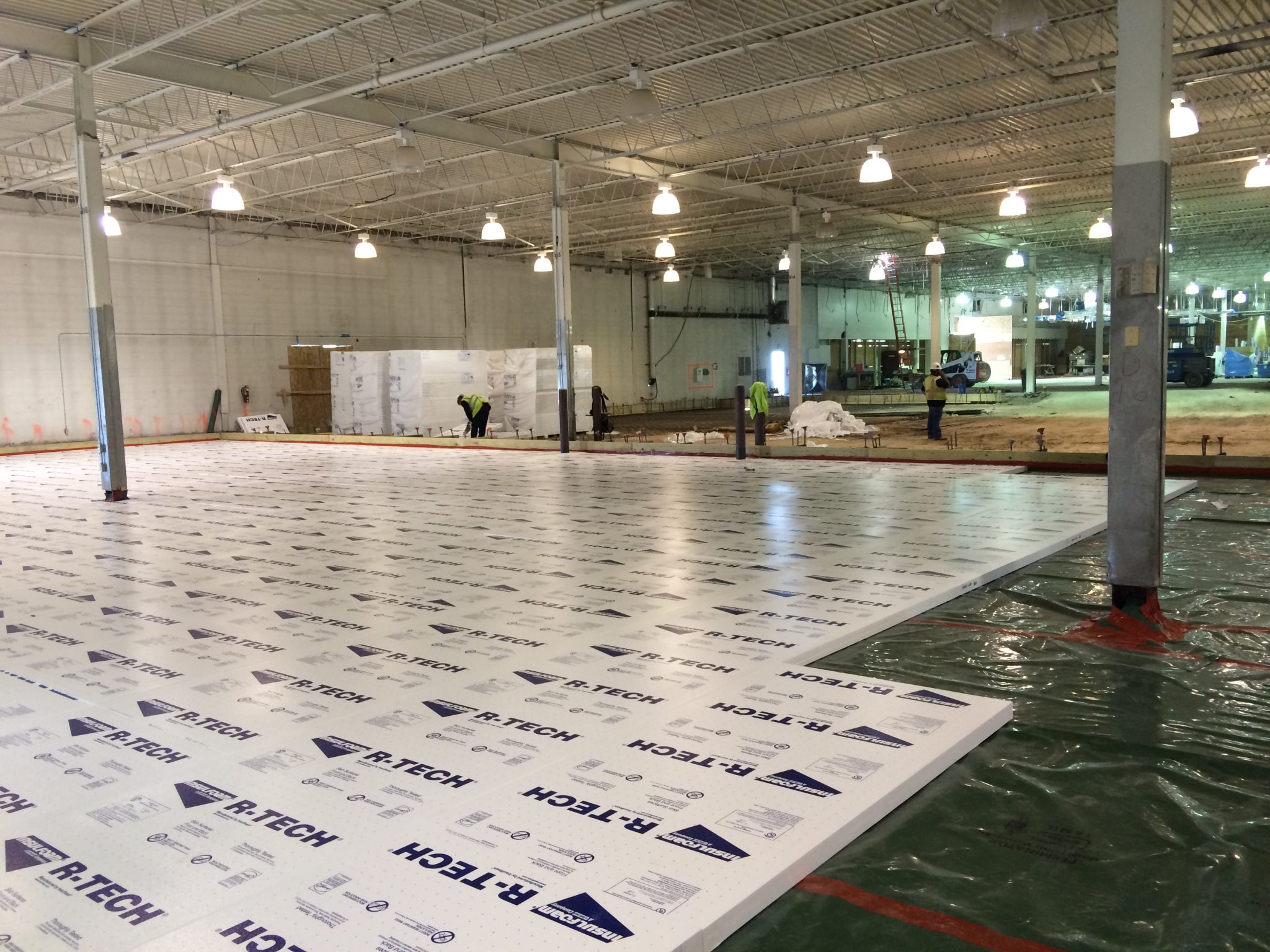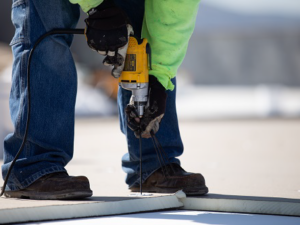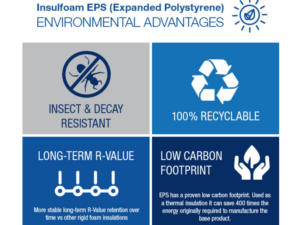Originally posted online at Construction Superintendent
Understanding rigid foam insulation for foundation and under-slab applications

Contractors are increasingly called upon to install rigid foam insulation under concrete slabs and on building foundations.
Up to one-quarter of a building’s energy loss is due to lack of insulation in below-grade areas, including the foundation and under slabs. Now that high-performance building envelopes are common above ground, the relative amount of total heat lost below grade will grow if these spaces are not addressed.
As a result, superintendents increasingly will encounter below-grade and under-slab insulation on all building types. To help increase understanding of how two common rigid-foam insulations perform in these settings, this article evaluates moisture absorption and thermal performance. It also discusses installation procedures for below-grade and under-slab insulation.
Rigid foam insulation
Two common rigid foam insulations specified for below-grade applications are expanded polystyrene (EPS) and extruded polystyrene (XPS).
EPS
An easy way to recognize EPS on the jobsite is that it is commonly white. This insulation is made of expanded polystyrene beads fused into sheet stock and blocks of various densities, compressive strengths and sizes. Historically used as a stable roof insulation, EPS has gained wide acceptance in wall, below-grade and under-slab applications due to its low-moisture absorption, strength and stable, long-term thermal performance. EPS insulation blocks can be custom-cut into a variety of shapes and sizes to meet wide ranging job specifications.
Building professionals have used EPS successfully in below-grade applications for decades. As of 2013, the International Code Council explicitly permits EPS throughout frost protected shallow foundations, under slabs and any other below-grade application.
XPS
To make XPS, manufacturers combine and melt polystyrene with blowing agents and additives, then force the liquid mixture through an extrusion die in a continuous feed, where it is shaped, cooled and trimmed to size. The product is most commonly available as boardstock of fixed size and thickness. Manufacturers often tint XPS a primary color for brand recognition.

EPS insulation absorbs significantly less moisture than does XPS insulation according to studies of real-world installations.
Moisture absorption and thermal performance
There is much confusion in the marketplace regarding whether EPS or XPS insulation resists moisture better. This is a key point, as wet insulation has lower thermal performance. While manufacturers of both insulation types tout that their products have lower moisture absorption, in-situ tests indicate that EPS performs better in this regard.
For example, in 2008, Stork Twin City Testing – an accredited independent testing laboratory – examined sheets of EPS and XPS removed from a side-by-side installation after 15 years in service on a below-grade foundation in St. Paul, Minnesota. The XPS was significantly wetter on extraction, with 18.9 percent moisture content by volume compared to 4.8 percent for the EPS. After 30 days of drying, the XPS still had elevated moisture of 15.7 percent, while the EPS had dried to 0.7 percent.
The U.S. Department of Energy’s Oak Ridge National Laboratory also reports high moisture absorption levels for XPS. In a 2012 study, the lab reported “all samples of XPS insulation gained much more moisture during the 15 years of contact with soil moisture.” The resulting loss of energy savings performance was 10 percent for a full basement (“deep basement”) and 44 percent for a slab-on-grade installation.
By comparison, the U.S. Army Cold Regions Research and Engineering Laboratory found EPS buried in wetted soil for 1,000 days absorbed only 1.7 percent moisture by volume, which is substantially lower than the XPS rates noted above.
Installing rigid foam insulation below grade
On building foundations, the insulation (whether EPS or XPS) is installed over the damp/waterproofing, after that layer has adequately cured. Crews can use mechanical fasteners or polystyrene-compatible adhesive to attach the insulation. Applying a bead of polystyrene-compatible caulk or mastic to the top of the insulation board minimizes water infiltration behind it.
For under-slab applications, the rigid foam insulation typically should be installed over a gravel base, with a poly vapor diffusion retarder between the gravel and insulation. Additional insulation is applied along the edges of the slab, because that is a primary surface for heat loss. To avoid damage to the insulation, it is necessary to ensure removal of any jagged surfaces or irregularities in the substrate before installing the rigid foam panels.
In either case, it is important to confirm all details with the insulation manufacturer and local building department, and to ensure appropriate construction techniques to drain water away from the building.
In addition to its lower moisture absorption and better long-term thermal performance, EPS has the highest R-value per dollar among rigid insulations. As such, it provides a cost-effective way to insulate building foundations, and under slabs.
Ram Mayilvahanan is the product marketing manager for Insulfoam, which offers below-grade insulation under the Insulfoam and R-Tech brand names. For more information, visit www.insulfoam.com.
Contact Ram Mayilvahanan, Insulfoam’s Product-Marketing Manager
Ram.Mayilvahanan@insulfoam.com
Connect with Ram on LinkedIn | Follow Insulfoam on LinkedIn
3 Comments
-
Thanks for the information
-
What’s up colleagues, its great post regarding tutoring and entirely explained,
keep it up all the time.





